It was probably the Swede, Magnus von Lagerstrom, a contemporary of Linne, and one of the directors of the East India Company, who introduced the beautiful genus, Lagerstroemia, to Europe.
The species L. indica, or « crepe myrtle », also known as «summer lilac », is well-acclimatized in southern Europe, but the fifty species of this genus, far more sensitive to cold temperatures, are found in the sub-tropical or tropical zones, particularly in Southeast Asia. Throughout the entire region, a large number of Lagerstroemia grow in the wild, hence their taxonomy is not well-established. In Laos, they are known by a generic term: tone peuay.
These trees, growing, more or less, according to the environment in which they find themselves, have a disorderly appearance, but their panicules of flowers (inflorescent, pyramidal), either white, violet, or pink, redeem themselves from this trademark. Their leaves are simple, opposed, elongated; their fruit are globular and dehiscent.
The bark of the Lagerstroemia contains a considerable amount of tannin, so much so that it is worth using against diarrhea. The leaves and the fruit contain a principle similar to insulin, which has been proven to have results in the treatment of diabetes; pharmacological studies are negative, but treatment has been positive for certain patients, and further investigations are underway.
Above all, these trees are sought for their wood – which is considered precious and is used in woodworking. The floors and beams of Laotian houses are usually made from the wood of these trees.
C’est probablement le Suédois Magnus von Lagerstrom, contemporain de Linné et l’un des directeurs de la compagnie des Indes qui a introduit en Europe le beau genre Lagerstroemia.
L’espèce L. indica ou “lagerose”, dite encore « lilas d’été », s’est bien acclimatée en Europe méridionale mais les cinquante espèces de ce genre, beaucoup plus sensibles au froid, se rencontrent dans les zones subtropicales ou tropicales, en particulier en Asie du Sud Est. Dans toute la région poussent spontanément un grand nombre de Lagerstroemia dont la taxonomie n’est pas encore bien établie. En Lao on les nomme d’un terme générique: tone peuay.
Ces arbres plus ou moins élevés selon l’environnement dans lequel ils se trouvent, ont une allure assez désordonnée, mais leurs fleurs en panicule (inflorescence en pyramide) qui vont du blanc au violet en passant par le rose, rachète largement ce manque de tenue. Leurs feuilles sont simples, opposées, oblongues; leurs fruits sont des capsules globuleuses et déhiscentes.
L’écorce des Lagerstroemia contient beaucoup de tannins ce qui leur vaut d’être utilisée contre la diarrhée. Les feuilles et les fruits renferment un principe semblable à l’insuline et aurait donné des résultats dans le traitement du diabète; les études pharmacologiques sont négatives mais le traitement a été positif sur certains patients et de plus amples investigations sont en cours
Cependant ces arbres sont surtout recherchés pour leur bois qui est considéré comme précieux, qui sert en ébénisterie et qui constitue en général, le plancher et les chevrons des maisons lao.
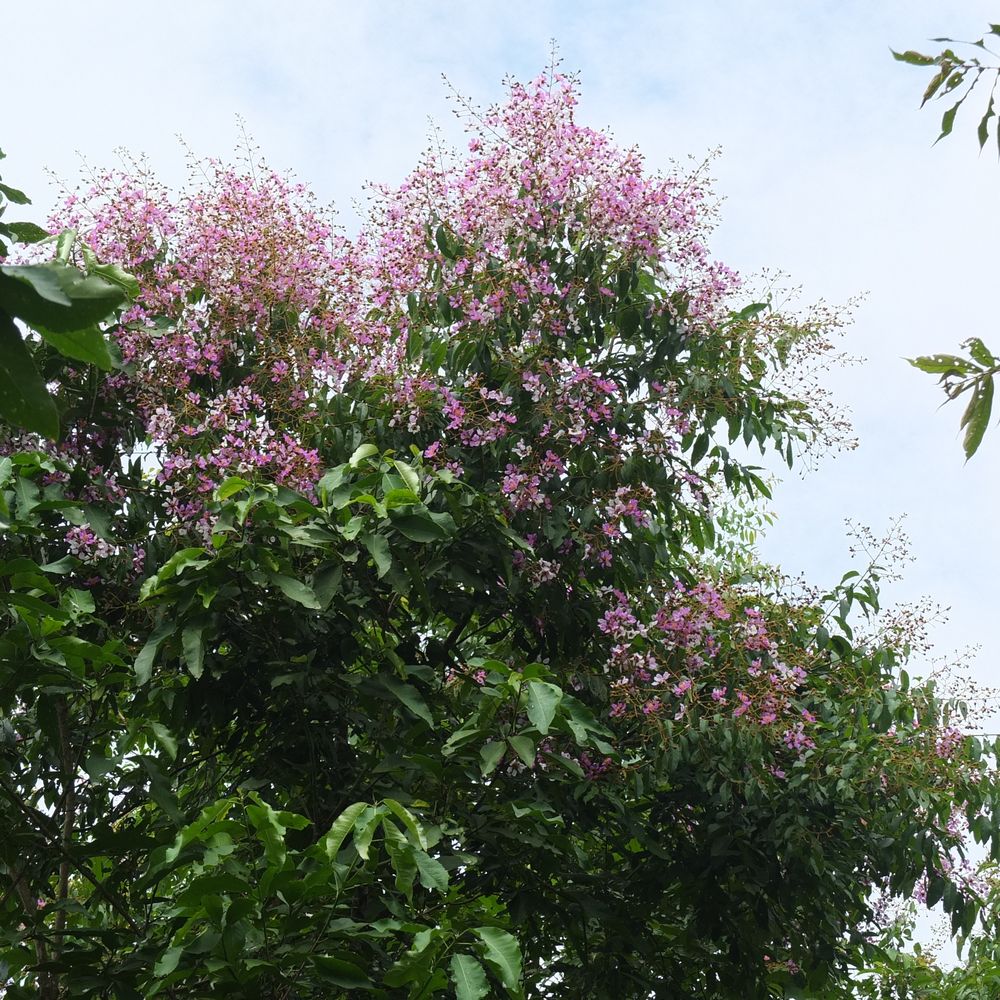
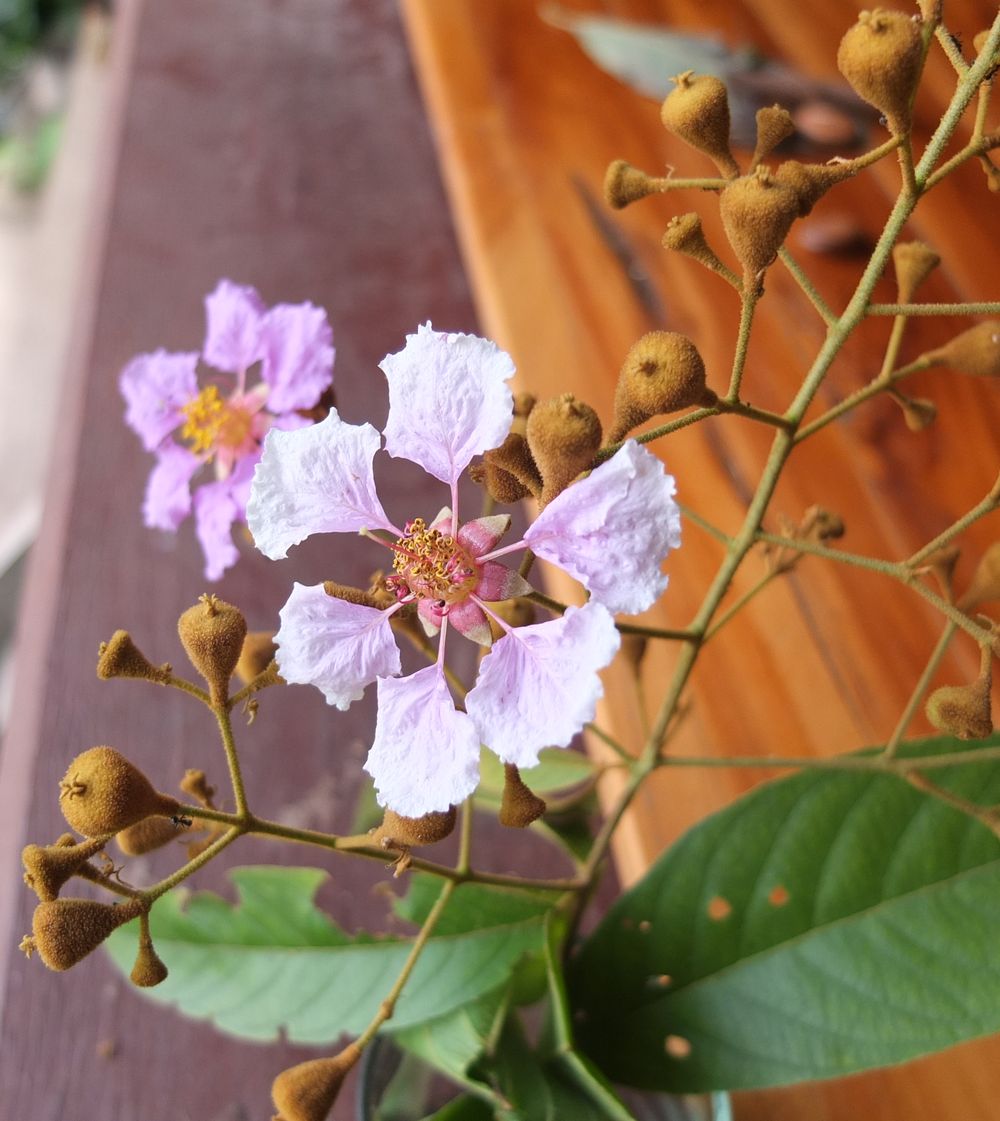
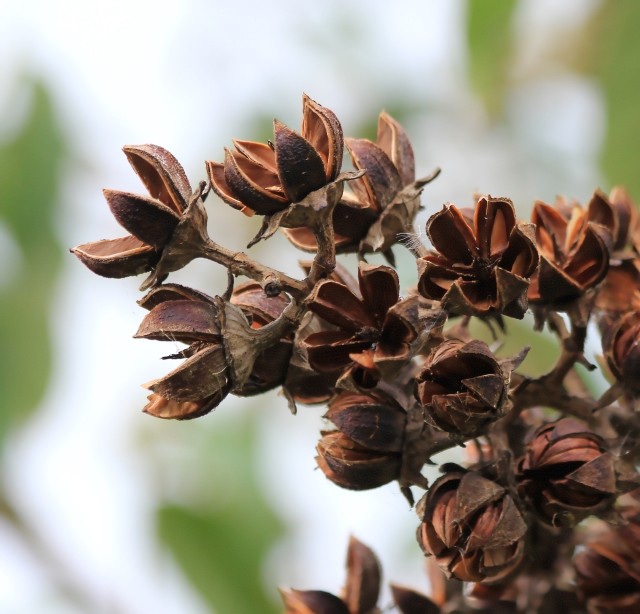
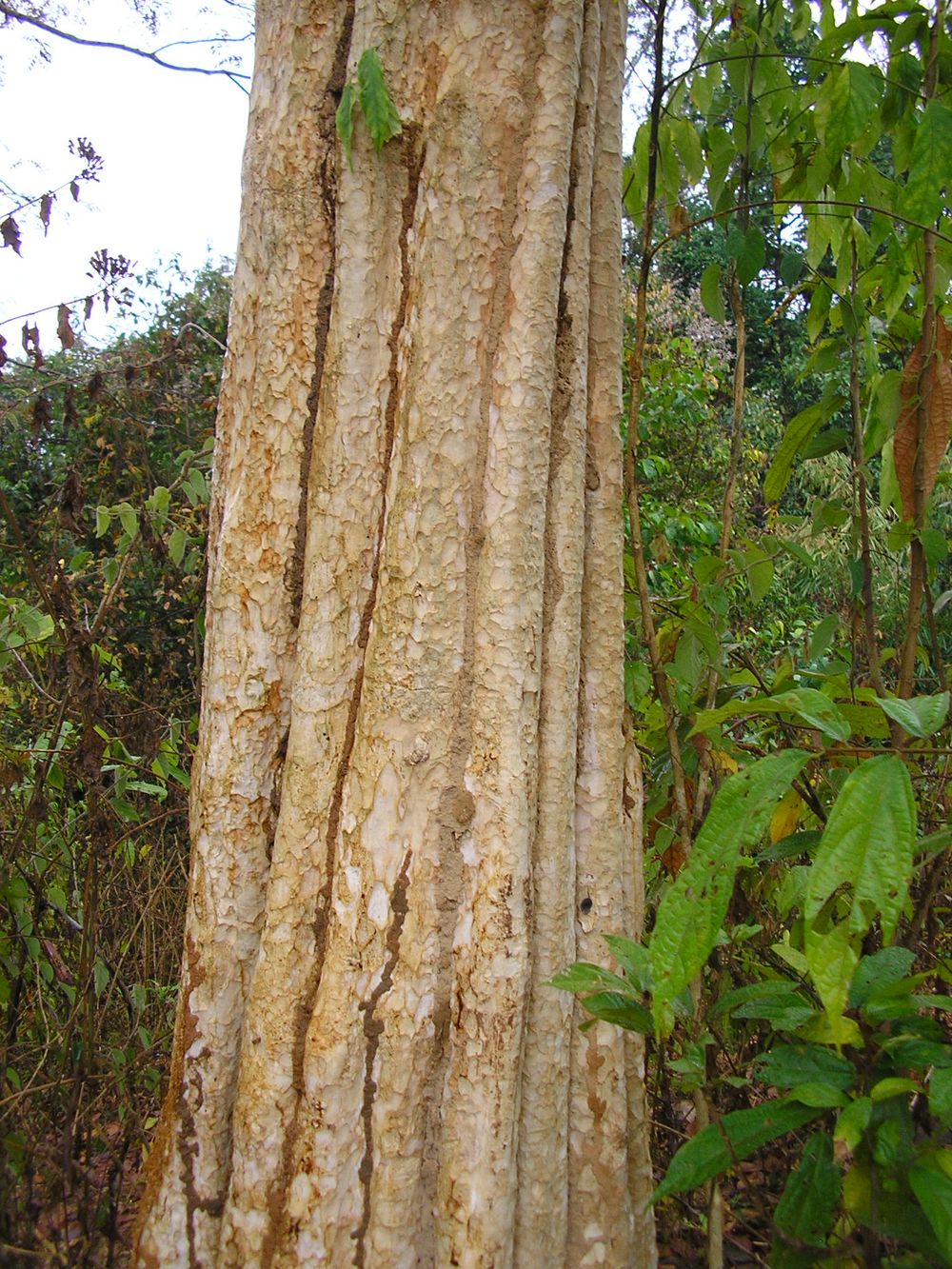
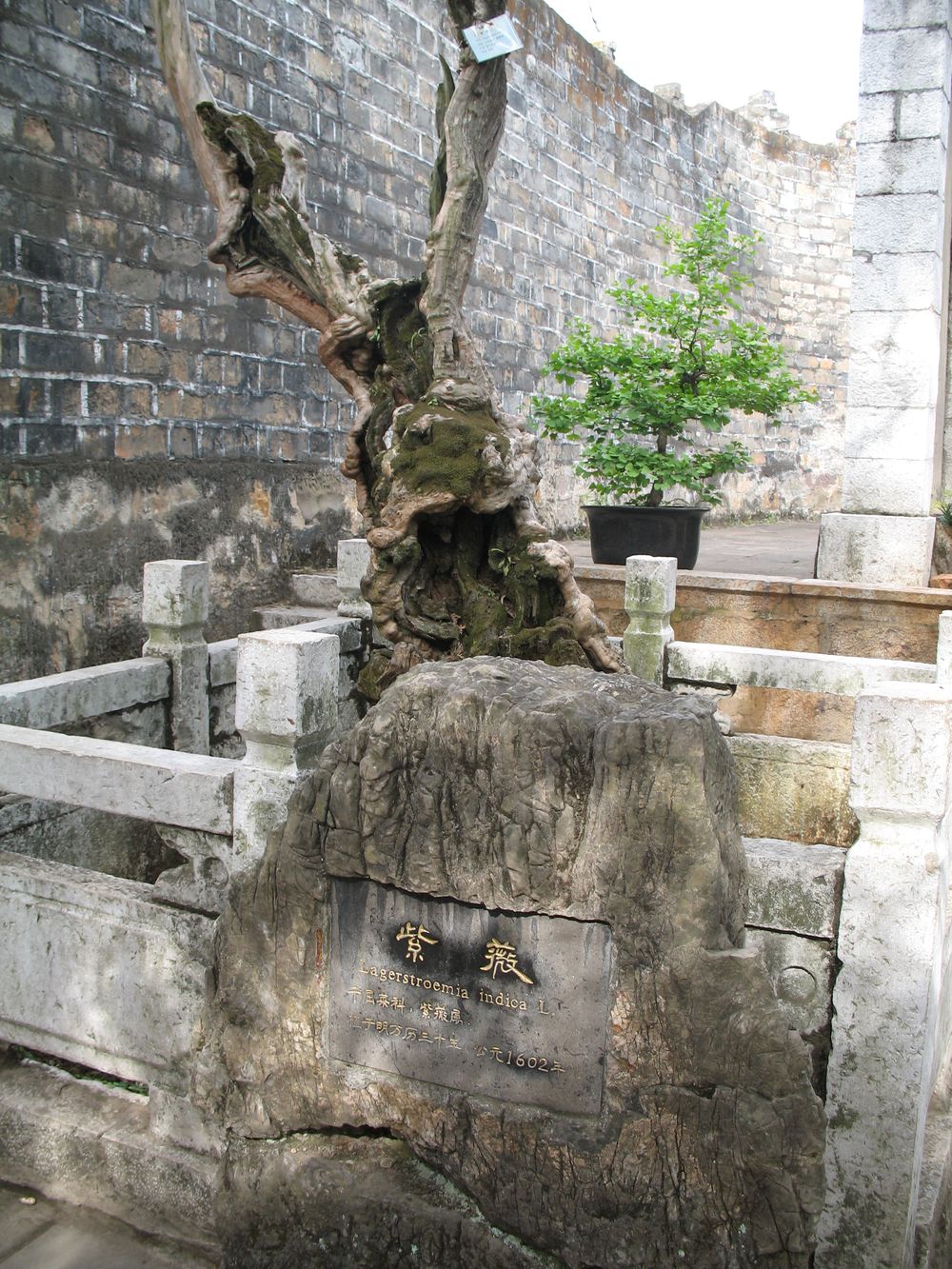
It was probably the Swede, Magnus von Lagerstrom, a contemporary of Linne, and one of the directors of the East India Company, who introduced the beautiful genus, Lagerstroemia, to Europe.
The species L. indica, or « crepe myrtle », also known as «summer lilac », is well-acclimatized in southern Europe, but the fifty species of this genus, far more sensitive to cold temperatures, are found in the sub-tropical or tropical zones, particularly in Southeast Asia. Throughout the entire region, a large number of Lagerstroemia grow in the wild, hence their taxonomy is not well-established. In Laos, they are known by a generic term: tone peuay.
These trees, growing, more or less, according to the environment in which they find themselves, have a disorderly appearance, but their panicules of flowers (inflorescent, pyramidal), either white, violet, or pink, redeem themselves from this trademark. Their leaves are simple, opposed, elongated; their fruit are globular and dehiscent.
The bark of the Lagerstroemia contains a considerable amount of tannin, so much so that it is worth using against diarrhea. The leaves and the fruit contain a principle similar to insulin, which has been proven to have results in the treatment of diabetes; pharmacological studies are negative, but treatment has been positive for certain patients, and further investigations are underway.
Above all, these trees are sought for their wood – which is considered precious and is used in woodworking. The floors and beams of Laotian houses are usually made from the wood of these trees.
C’est probablement le Suédois Magnus von Lagerstrom, contemporain de Linné et l’un des directeurs de la compagnie des Indes qui a introduit en Europe le beau genre Lagerstroemia.
L’espèce L. indica ou “lagerose”, dite encore « lilas d’été », s’est bien acclimatée en Europe méridionale mais les cinquante espèces de ce genre, beaucoup plus sensibles au froid, se rencontrent dans les zones subtropicales ou tropicales, en particulier en Asie du Sud Est. Dans toute la région poussent spontanément un grand nombre de Lagerstroemia dont la taxonomie n’est pas encore bien établie. En Lao on les nomme d’un terme générique: tone peuay.
Ces arbres plus ou moins élevés selon l’environnement dans lequel ils se trouvent, ont une allure assez désordonnée, mais leurs fleurs en panicule (inflorescence en pyramide) qui vont du blanc au violet en passant par le rose, rachète largement ce manque de tenue. Leurs feuilles sont simples, opposées, oblongues; leurs fruits sont des capsules globuleuses et déhiscentes.
L’écorce des Lagerstroemia contient beaucoup de tannins ce qui leur vaut d’être utilisée contre la diarrhée. Les feuilles et les fruits renferment un principe semblable à l’insuline et aurait donné des résultats dans le traitement du diabète; les études pharmacologiques sont négatives mais le traitement a été positif sur certains patients et de plus amples investigations sont en cours
Cependant ces arbres sont surtout recherchés pour leur bois qui est considéré comme précieux, qui sert en ébénisterie et qui constitue en général, le plancher et les chevrons des maisons lao.










It was probably the Swede, Magnus von Lagerstrom, a contemporary of Linne, and one of the directors of the East India Company, who introduced the beautiful genus, Lagerstroemia, to Europe.
The species L. indica, or « crepe myrtle », also known as «summer lilac », is well-acclimatized in southern Europe, but the fifty species of this genus, far more sensitive to cold temperatures, are found in the sub-tropical or tropical zones, particularly in Southeast Asia. Throughout the entire region, a large number of Lagerstroemia grow in the wild, hence their taxonomy is not well-established. In Laos, they are known by a generic term: tone peuay.
These trees, growing, more or less, according to the environment in which they find themselves, have a disorderly appearance, but their panicules of flowers (inflorescent, pyramidal), either white, violet, or pink, redeem themselves from this trademark. Their leaves are simple, opposed, elongated; their fruit are globular and dehiscent.
The bark of the Lagerstroemia contains a considerable amount of tannin, so much so that it is worth using against diarrhea. The leaves and the fruit contain a principle similar to insulin, which has been proven to have results in the treatment of diabetes; pharmacological studies are negative, but treatment has been positive for certain patients, and further investigations are underway.
Above all, these trees are sought for their wood – which is considered precious and is used in woodworking. The floors and beams of Laotian houses are usually made from the wood of these trees.
C’est probablement le Suédois Magnus von Lagerstrom, contemporain de Linné et l’un des directeurs de la compagnie des Indes qui a introduit en Europe le beau genre Lagerstroemia.
L’espèce L. indica ou “lagerose”, dite encore « lilas d’été », s’est bien acclimatée en Europe méridionale mais les cinquante espèces de ce genre, beaucoup plus sensibles au froid, se rencontrent dans les zones subtropicales ou tropicales, en particulier en Asie du Sud Est. Dans toute la région poussent spontanément un grand nombre de Lagerstroemia dont la taxonomie n’est pas encore bien établie. En Lao on les nomme d’un terme générique: tone peuay.
Ces arbres plus ou moins élevés selon l’environnement dans lequel ils se trouvent, ont une allure assez désordonnée, mais leurs fleurs en panicule (inflorescence en pyramide) qui vont du blanc au violet en passant par le rose, rachète largement ce manque de tenue. Leurs feuilles sont simples, opposées, oblongues; leurs fruits sont des capsules globuleuses et déhiscentes.
L’écorce des Lagerstroemia contient beaucoup de tannins ce qui leur vaut d’être utilisée contre la diarrhée. Les feuilles et les fruits renferment un principe semblable à l’insuline et aurait donné des résultats dans le traitement du diabète; les études pharmacologiques sont négatives mais le traitement a été positif sur certains patients et de plus amples investigations sont en cours
Cependant ces arbres sont surtout recherchés pour leur bois qui est considéré comme précieux, qui sert en ébénisterie et qui constitue en général, le plancher et les chevrons des maisons lao.


